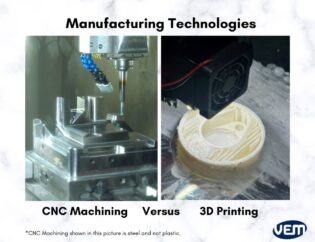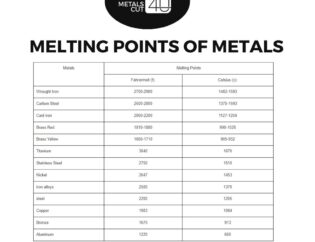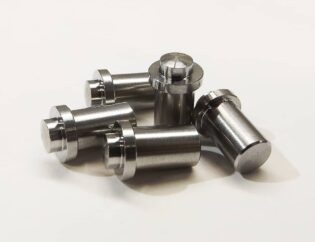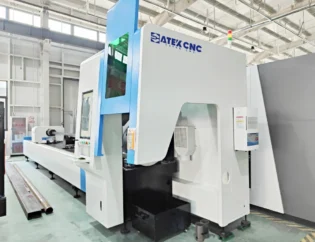In the world of manufacturing, CNC vertical machining centers (VMCs) play a pivotal role in precision engineering. These advanced machines combine computer numerical control with vertical milling capabilities, allowing for intricate designs and high-quality production. Understanding VMCs is essential for anyone involved in machining, as they enhance efficiency and accuracy in various applications.
This guide will delve into the fundamental aspects of CNC vertical machining centers, including their components, operational principles, and advantages. Readers will gain insights into how VMCs can streamline workflows and improve product quality, making them indispensable in modern manufacturing.
Additionally, the guide will cover best practices for operating and maintaining VMCs, ensuring optimal performance and longevity. By the end, readers will be equipped with the knowledge to make informed decisions about utilizing CNC vertical machining centers in their projects, whether they are industry professionals or enthusiasts.
A Comprehensive Guide to CNC Vertical Machining Centers
Vertical machining centers (VMCs) are essential tools in modern manufacturing, providing precision and efficiency for a wide range of machining tasks. These machines are designed to perform various operations, including milling, drilling, and tapping, making them versatile assets in any machine shop. In this guide, we will explore the technical features, types, and applications of CNC vertical machining centers, along with insights from leading manufacturers such as Haas Automation, Methods Machine Tools, Okuma, and KAAST Machine Tools.
Technical Features of CNC Vertical Machining Centers
CNC vertical machining centers are equipped with advanced technology that enhances their performance and usability. Below is a comparison table highlighting key technical features of VMCs from various manufacturers.
| Feature | Haas CNC Machines | Methods Machine Tools | Okuma | KAAST Machine Tools |
|---|---|---|---|---|
| Control System | Haas CNC Control | Fanuc Control | Okuma OSP | KAAST Control |
| Spindle Speed | Up to 12,000 RPM | Up to 20,000 RPM | Up to 12,000 RPM | Up to 10,000 RPM |
| Travel Range (X/Y/Z) | 40″ x 20″ x 25″ | 50″ x 30″ x 25″ | 40″ x 20″ x 20″ | 30″ x 16″ x 16″ |
| Tool Capacity | 24-40 tools | 30-50 tools | 20-40 tools | 16-24 tools |
| Accuracy | ±0.0005″ | ±0.0002″ | ±0.0001″ | ±0.0005″ |
| Weight | 5,000 lbs | 8,000 lbs | 6,500 lbs | 3,500 lbs |
| Cooling System | Standard | Advanced Cooling | High-Performance Cooling | Standard |
Types of CNC Vertical Machining Centers
CNC vertical machining centers come in various types, each designed for specific applications and industries. Below is a comparison table of different types of VMCs.
| Type | Description | Applications |
|---|---|---|
| Standard VMC | Basic model for general machining tasks. | Prototyping, small batch production. |
| High-Speed VMC | Optimized for high-speed machining with faster spindle speeds. | Aerospace, automotive components. |
| 5-Axis VMC | Allows for complex geometries and multi-sided machining. | Mold making, intricate parts. |
| Vertical Machining Center with Automation | Integrated with automation systems for increased productivity. | Mass production, assembly lines. |
| Compact VMC | Smaller footprint, ideal for limited space. | Tool rooms, small workshops. |
Insights into CNC Vertical Machining Centers
CNC vertical machining centers are widely used across various industries, including aerospace, automotive, medical, and electronics. Their ability to produce high-precision parts quickly and efficiently makes them indispensable in modern manufacturing.
Advantages of Using VMCs
- Precision and Accuracy: VMCs are designed to deliver high levels of precision, ensuring that parts are manufactured to exact specifications.
- Versatility: With the ability to perform multiple operations, VMCs can handle a wide range of machining tasks, reducing the need for multiple machines.
- Automation Capabilities: Many VMCs can be integrated with automation systems, enhancing productivity and reducing labor costs.
- User-Friendly Interfaces: Modern VMCs come equipped with intuitive control systems, making them easier to operate and program.
Applications of CNC Vertical Machining Centers
CNC vertical machining centers are used in various applications, including:
– Aerospace Components: Manufacturing complex parts with tight tolerances.
– Automotive Parts: Producing engine components, brackets, and housings.
– Medical Devices: Creating precision instruments and implants.
– Electronics: Machining enclosures and components for electronic devices.
Conclusion
CNC vertical machining centers are vital tools in the manufacturing industry, offering precision, versatility, and efficiency. With advancements in technology and automation, these machines continue to evolve, meeting the demands of modern production environments. Leading manufacturers like Haas Automation, Methods Machine Tools, Okuma, and KAAST Machine Tools provide a range of VMCs tailored to various applications, ensuring that businesses can find the right solution for their machining needs.
FAQs
1. What is a CNC vertical machining center?
A CNC vertical machining center is a type of machine tool that uses computer numerical control to automate the machining process, allowing for precise and efficient production of parts.
2. What industries use vertical machining centers?
Vertical machining centers are used in various industries, including aerospace, automotive, medical, and electronics, for manufacturing high-precision components.
3. How do I choose the right VMC for my needs?
When choosing a VMC, consider factors such as the size of the parts you need to machine, the required precision, and whether you need automation capabilities.
4. What are the benefits of high-speed VMCs?
High-speed VMCs offer faster spindle speeds and feed rates, allowing for quicker machining times and improved surface finishes, making them ideal for high-volume production.
5. Can VMCs be integrated with automation systems?
Yes, many modern VMCs can be integrated with automation systems, enhancing productivity and reducing labor costs by allowing for unattended operation.




